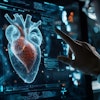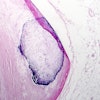Gov. Arnold Schwarzenegger of California on Wednesday signed a medical radiation protection bill into law, paving the way for implementation of the first state law in the U.S. aimed at protecting patients from excessive radiation exposure received during CT scans and radiation therapy procedures.
SB 1237, which the governor signed without comment along with scores of other bills, will impose strict new procedures and reporting requirements to protect patients from medical radiation overdoses when it becomes effective July 1, 2012. The bill also provides an accreditation mandate for CT scanners that will take effect January 1, 2013, six months after the other provisions.
The bill requires that radiation dose be recorded on the scanned image and in a patient's health records, and that radiation overdoses be reported to patients, treating physicians, and the state Department of Public Health (DPH). It requires the same level of monitoring for therapeutic radiation used to treat cancer.
Among its reporting provisions, SB 1237 will require, for example, that medical facilities report to the DPH whenever the radiation dose for a given scan exceeds 20% of the prescribed dose, or whenever the wrong anatomic area is scanned.
"There are certainly positive steps to the bill. I think the more the public knows about the proper use of radiation, the better [it is] for the radiology community," said Robert Achermann, executive director of the Sacramento-based California Radiological Society (CRS) in an interview with AuntMinnie.com.
Many consumer and patient groups, including the California Consumer Federation, supported the bill. But CRS, which lobbies on behalf of California radiologists, has remained neutral on the legislation amid concerns over the difficulty of complying with its reporting requirements.
For this reason, Achermann called the law's delayed 2012 implementation date "critical" to implementing the best possible language.
"Delayed implementation is going to allow the radiology community, the legislators, the regulatory agents, and the [U.S. Food and Drug Administration (FDA)] to continue to explore the issues and look for the best solutions," said Achermann. CRS is continuing to work with legislators to ensure that the radiology community fully understands the bill and its requirements, and that anything that's found to be unworkable can be amended, he said.
"I'm sure this will not be a static issue in terms of what are the best ways to reduce exposure," he said. "That's what cleanup legislation is for."
Most concerning to CRS was that the Code of Federal Regulations (CFR) governing the administration of medical isotopes formed the basis of the reporting requirements in the new law, he said. Those rules are considered somewhat antiquated and not entirely appropriate to the diagnostic and therapeutic use of radiation covered by the new law, he said. From a broader perspective, it's close to impossible to do everything perfectly in a first attempt at such complex legislation as SB 1237, he said.
Between now and July 2012, the radiology community has to "ingest the bill and see the specifics," he said. "Anytime you pass new legislation, you can't have thought of everything," Achermann said. "Even though we had a lot of input from our members, there are a lot of things people don't think about. Sometimes the wording isn't appropriate and could be done better."
"This is not a California-unique issue. It's going to be used as model" for other state laws, he said.
Long road to passage
The legislation was introduced in February by State Sen. Alex Padilla (D-Pacoima) following a series of serious radiation overdoses that prompted outrage among patients and a raft of lawsuits. Last fall the California Department of Public Health learned that over an 18-month period some 260 patients at Cedars-Sinai Medical Center in Los Angeles who underwent CT perfusion scans were exposed to radiation doses eight times higher than normal.
A later review found that other California facilities, including Los Angeles County-USC Medical Center in Los Angeles; Mad River Community Hospital in Arcata; Glendale Adventist Medical Center in Glendale; Providence Saint Joseph Medical Center in Burbank; and Bakersfield Memorial Hospital in Bakersfield, among others, had also used excessive radiation doses, implicating the medical staff as well as scanner manufacturers in the errors.
The FDA is also in the process of implementing radiation protection measures that will take effect in 2012, but California's history of medical radiation accidents made the state law an urgent necessity, according to aides of Padilla.
"SB 1237 will protect patients. There is an urgent need for protocols and safeguards to prevent radiation overdoses," wrote Padilla in a September 30 statement. "This bill will provide physicians the information they need to track dosage levels, identify errors, and prevent patients from receiving overdoses of radiation."
A PDF document of the bill can be accessed by clicking here.
By Eric Barnes
AuntMinnie.com staff writer
September 30, 2010
Related Reading
Calif. radiation bill goes to governor, August 31, 2010
SoCal hospitals say patients got too much CT radiation, August 6, 2010
Calif. Senate passes radiation bill, June 2, 2010
FDA hearings rise above medical radiation rhetoric, March 31, 2010
FDA finds new cases of CT radiation overexposure, December 7, 2009
Copyright © 2010 AuntMinnie.com




















